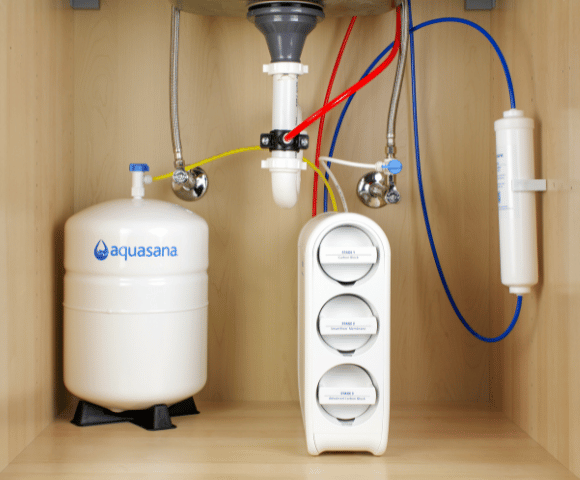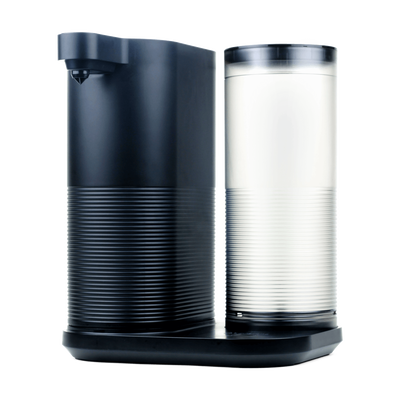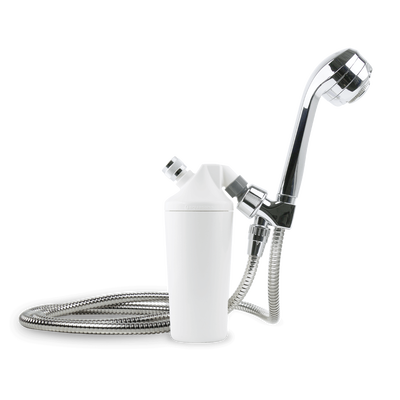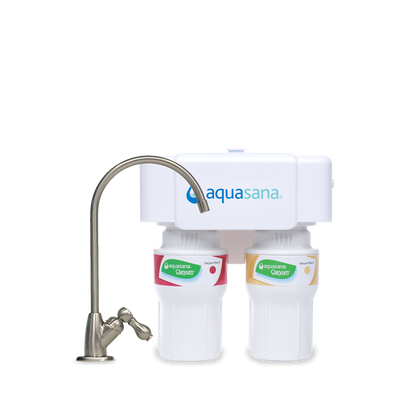2. Add mineral drops
Another way to remineralize your water is by using mineral drops. A single bottle of mineral drops can treat up to 200 gallons of water and costs anywhere from $20-50, depending on your mineral blend. These drops are added to reverse osmosis water in small quantities, allowing you to customize the mineral content based on your preferences and specific health needs. While relatively convenient in delivery, using mineral drops can become a hassle, as you’ll need to dose each glass of water you drink with the drops. The cost of mineral drops can also add up to be a hefty annual expense.
3. Add mineral-rich salts
You can also use mineral-rich salts like Himalayan sea salt to reintroduce calcium, iron, and magnesium back into your water. At least, that’s what a social media influencer or salt company might try to convince you. According to the World Health Organization, the amount of salt you’d have to add to your water to reap any health benefit would be “exceedingly high” and definitely more than the recommended daily sodium intake of two grams a day.
4. Use an alkaline pitcher filter
Finally, you can use an alkaline pitcher filter to raise the pH level of your water and add minerals back — which will also improve the taste of your water as well. Alkaline pitcher filters typically contain a blend of mineral balls or cartridges with calcium, magnesium, and potassium, among others. But, as with any pitcher, you must manually refill the pitcher each time it gets low and replace the filter every so often to keep enjoying the benefits you sought in the first place.
UNDER SINK WATER FILTER
SmartFlow® Reverse Osmosis
High-efficiency reverse osmosis system removes up to 99.99% of 90 contaminants, including fluoride, arsenic, chlorine, and lead.
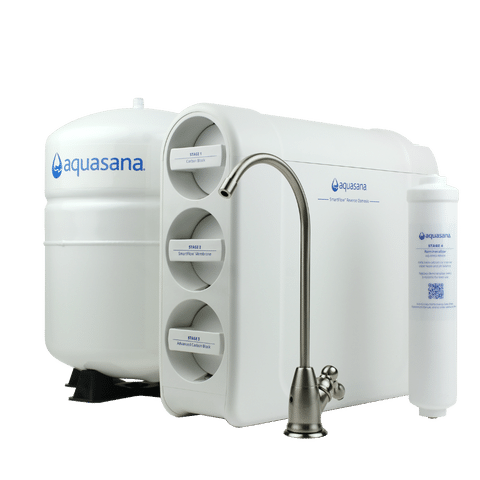
Improve the quality of your tap water with Aquasana
Experience healthy, great-tasting tap water with our SmartFlow® Reverse Osmosis system, which includes a remineralizer. With the ability to reduce 90 known contaminants from water and proven to be 5x more effective at removing impurities than competitors, Aquasana can help you enjoy your water with confidence. Take the first step towards a healthier lifestyle and try Aquasana's SmartFlow® Reverse Osmosis system.
